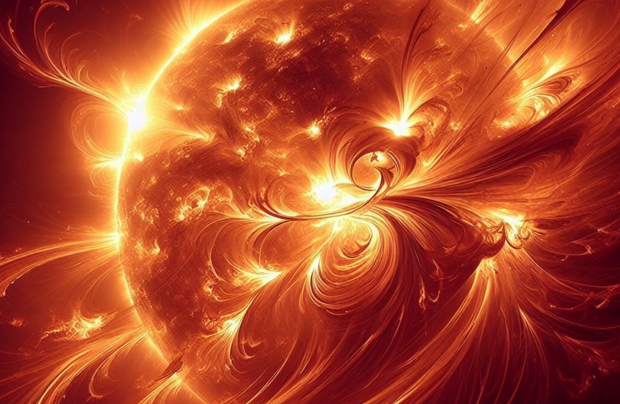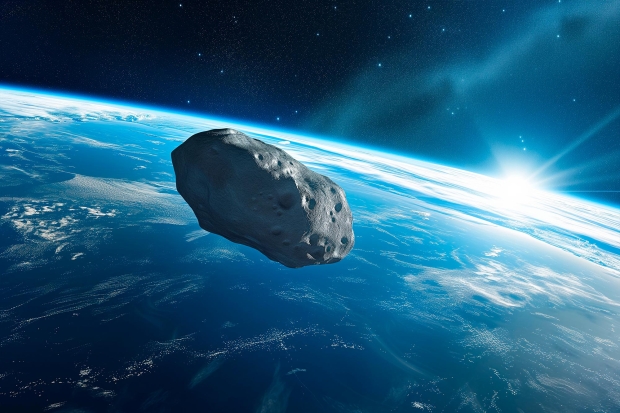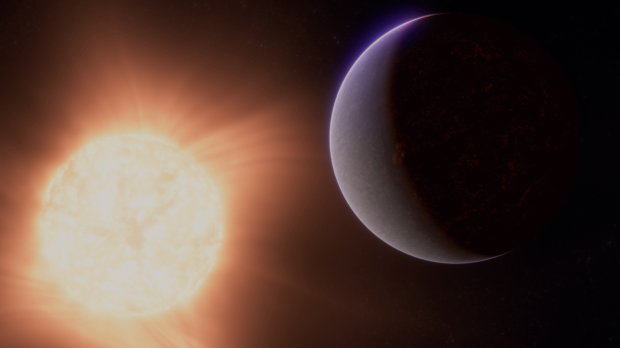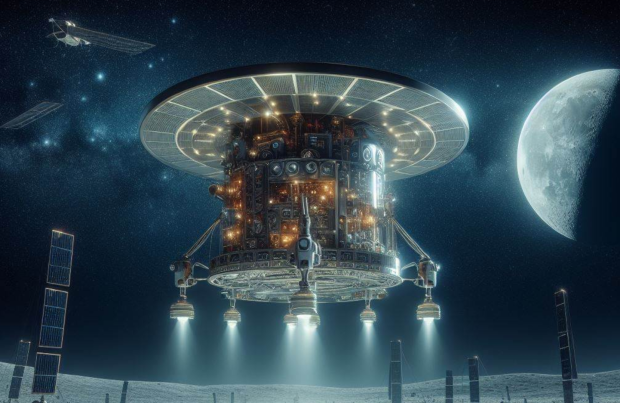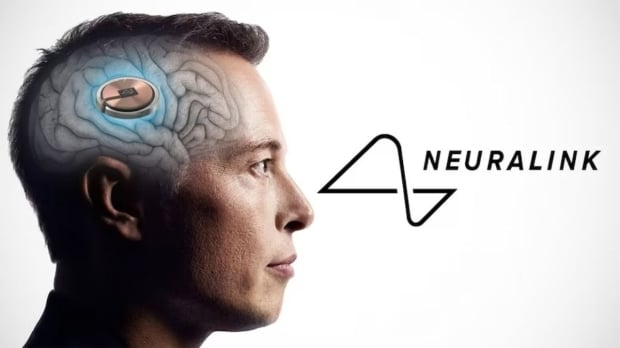Science, Space, Health & Robotics News - Page 1
NASA officially releases video of the biggest solar flare in last 20 years
It was only recently that NASA confirmed a massive solar flare taking place on the surface of the Sun, with officials confirming its the biggest solar eruption of the last 20 years and this 11-year cycle.
The solar flare took place at 12:51 pm ET on May 14 and was captured by NASA's Solar Dynamics Observatory. For those that don't know, a solar flare happens when the Sun's magnetic field lines are contorted and snap, resulting in a massive outburst of X-rays and ultraviolet radiation. These solar eruptions can significantly impact Earth by causing interference with satellite communications, power grids and GPS signals.
Additionally, a solar flare can typically be paired with a coronal mass ejection (CME), which is a blast of solar plasma, or charged particles. When these charged particles either from the CME or the initial flare hit Earth they can produce auroras to appear at lower altitudes, or further south than they typically do. NASA JPL compiled the images of the May 14 solar flare and placed them into a video, which can be seen above.
Elon Musk announces Neuralink is ready to accept its second brain implant patient
The first human to accept a Neuralink brain chip implant was able to control a PC through their thoughts, and now the Elon Musk-led company is looking for its second participant.
In early March, Neuralink showcased a 29-year-old man named Nolan Arbaugh, who was unfortunately paralyzed from the neck down following a tragic diving accident eight years ago. Arbaugh demonstrated the capabilities of the Neuralink brain chip called "Telepathy" in a video that showed him controlling the cursor on a PC and even playing a game of Mario Kart against another player.
Neuralink has since taken to its official X account to share a video of Arbaugh talking about his motivations behind agreeing to participate in the trial, saying that he wants to help future quadriplegics based on what is learned from his involvement now. Notably, Arbaugh said the surgery for the brain implant was "super easy," and there was a significant learning process to differentiate "imagined movement versus attempted movement" in order to control a cursor on a PC.
NASA confirms record-breaking solar eruption triggering radio blackouts
Officials have confirmed the Sun has launched the strongest solar flare of this solar cycle, an 11-year period that takes the Sun from its least active to its most active.
The National Oceanic and Atmospheric Administration's (NOAA) Space Weather Prediction Center recently announced the eruption of a solar flare that measured X8.7, which resulted in radio blackouts and widespread auroras around our planet. Notably, researchers pinpointed the source of the massive solar flare to the sunspot region 3664, which reports indicate measure at least 15 Earths wide.
For those that don't know, a solar flare is caused by magnetic disturbances in the Sun, specifically when the magnetic field lines of the Sun are twisted and contorted. The snapping of these magnetic field lines results in the release of powerful exertion of X-rays and ultraviolet radiation. Additionally, a solar flare can also release what is called a coronal mass ejection (CME), which is a powerful wave of charged solar particles that can hit Earth if the planet is in the direction of its trajectory.
Scientists breakthrough with 'world's purest silicon' set to power next-gen computers
A team of researchers has created an advanced version of silicon that could be used as the foundation for the next generation of computing.
The new breakthrough technology is described as an extremely pure form of silicon, the semiconductor material used in traditional computers, and has been detailed in a new study published in the journal Nature Communications Materials. According to the paper, the new form of silicon could be used to bring quantum computing to silicon-based hardware, making these powerful next-generation computers much more accessible to everyone.
A rudimentary explanation of quantum computing is as follows. Traditional computers operate by encoding in binary, 1's or 0's. A quantum computer can encode data separately and in both 1's and 0's, or what is called a qubit, superposition of both of these states. This state is called "coherence" and enables processing calculations much faster than traditional forms of encoding. However, quantum computing has its challenges, as qubits have proven to be "noisy," which means outside elements can easily interfere with the stability of the quantum state of data.
Elon Musk confirms Starlink suffered from 'degraded service' from a Sun blast
Elon Musk has confirmed that SpaceX's Starlink satellite constellation was hit by a blast from the Sun, causing the satellites to buckle under "a lot of pressure".
SpaceX's constellation of Starlink satellites, which total nearly 6,000, managed to survive recent intense solar activity within Earth's upper atmosphere. More specifically, Elon Musk's SpaceX mentioned that a geomagnetic storm was causing "degraded service" for its Starlink satellites, which increases the density of Earth's upper atmosphere and can cause GPS communications to be scrambled.
However, all appears to be well, with SpaceX taking to its X account to announce that "All Starlink satellites on-orbit weathered the geomagnetic storm and remain healthy". Notably, this wasn't just any old geomagnetic storm, as conditions reached level 5 on the 5-point scale of geomagnetic activity on Friday, according to the Space Weather Prediction Center (SWPC), which echoes the comments Musk made on his X account, "Major geomagnetic solar storm happening right now. Biggest in a long time."
NASA confirms 1,000-foot-wide 'God of Destruction' asteroid will approach Earth
By the end of the decade an asteroid that measures approximately 1,000-foot-wide will approach Earth, and this asteroid has been named after the Egyptian god of chaos and destruction.
The closest approach of the asteroid called Apophis will occur on April 13, 2029, and due to its incredible size and close proximity to Earth, a safe but extremely close 30,000 miles, skywatchers will be able to observe the asteroid with the naked eye. Apophis has been at the top of the European Space Agency's (ESA's) "impact risk list" of potentially hazardous asteroids (PHAs) and NASA's Sentry Risk Table for 17 years, but further analysis by NASA determined it won't hit Earth for at least the next 100 years.
So, what's the big deal? NASA plans on using the close approach of Apophis as an opportunity to learn more about near-Earth asteroids, and space rocks in general, as Apophis formed around the same time the as the planets, making its material extremely valuable to researchers that want to piece together the long evolution of the solar system.
NASA discovers atmosphere around rocky planet outside our solar system
NASA has taken to its website to highlight a "rocky" planet approximately 41 light-years from Earth within the constellation Cancer.
That planet is called 55 Cancri e, and is referred to as a super-hot super-Earth exoplanet by researchers as it has a diameter twice that of Earth and has a composition similar to our planet's. As for super-hot, 55 Cancri e orbits its host star at approximately 1.4 million miles, or about one-twenty-fifth the distance between Mercury and the Sun. Due to its extremely close proximity, 55 Cancri e is believed to be tidally locked to its star, meaning only one side of the planet is facing the host star - exactly how from Earth we can only see one side of the Moon.
NASA's James Webb Space Telescope (JWST) pointed its sensitive infrared images at the planet and measured the light coming off it. By measuring the light researchers are able to determine what elements are present in the atmosphere, and the first indication 55 Cancri e could have a substantial atmosphere came from temperature measurements, or the heat energy given off in the form of infrared light.
Continue reading: NASA discovers atmosphere around rocky planet outside our solar system (full post)
NASA highlights photo of the Moon that took two months to capture
Astrophotography can be really easier and really difficult, and sometimes the most difficult attempts at capturing the cosmos pay off immensely. This is one of those examples.
Astrophotographer Betul Turksoy captured what is called an analemma, which is a figure 8 curve that is created from the elliptical curve of the Moon. Where it gets difficult is the requirements to take the above photograph. The above photograph was featured on NASA's Astronomy Picture of the Day on October 10, 2022, where it's explained to capture an analemma, typically of the Sun, the camera needs to be planted in a single spot and the time of the time of the Sun marked for the first photograph. Then, take a photograph at the same time each day for one year.
However, a Moon analemma comes with some caveats. According to NASA, on average, the Moon returns to the same position in the sky about 50 minutes and 29 seconds later each day, which means to achieve a true Moon analemma, every photograph needs to be taken 50 minutes 29 seconds later each day. The duration of the photography bout will be one lunar month. Due to the above taking two months to capture, it technically shows a double lunar analemma.
Continue reading: NASA highlights photo of the Moon that took two months to capture (full post)
NASA reveals plans to build levitating robots on the surface of the Moon
NASA has taken to its website to reveal some brief plans for constructing the first levitating robot on the surface of the Moon.
NASA's Jet Propulsion Laboratory has proposed plans to construct the first lunar railway system, which will be designed to provide reliable, autonomous and efficient payload transport between locations on the surface of the Moon. The space agency has proposed developing FLOAT, or Flexible Levitation on a Track, which is a system that uses magnetic robots that levitate over the track.
How is this possible? NASA explains the track will be comprised of three layers: a graphene layer that enables robots to float above it using diamagnetic levitation, a flex-circuit layer to generate electromagnetic thrust to move the robots along the track, and an optional, but preferable solar panel layer to catch any sunlight. The additional benefits of FLOAT is the robots won't be touching the track, which minimizes the chance of wear and tear.
Neuralink confirms its first human brain chip patient experienced a malfunction
Neuralink has posted an update on its first human patient to receive a brain implant, saying within the first weeks after the medical procedure a problem presented itself.
For those that don't know, Neuralink is Elon Musk's brain implant company that has constructed a brain-computer interface (BCI). With this new piece of technology, Neuralink believes it will be able to help people suffering from diseases such as paralysis by enabling control of a device with the patient's thoughts. The first paralysis patient to receive the BCI was 29-year-old Nolan Arbaugh, who was shown controlling a desktop mouse cursor and even playing video games such as Mario Kart.
Despite this achievement, Neuralink details a malfunction that occurred with Arbaugh's BCI, with the company writing the brain chips "threads" that are thinner than human hair and record neural signals. These threads, unfortunately, began to retract from Arbaugh's brain. Neuralink's system called Link records neural signals using 1,024 electrodes that are spread across 64 threads. With fewer electrodes to monitor brain signals, Neuralink was prevented from accurately measuring Link's speed/accuracy.


